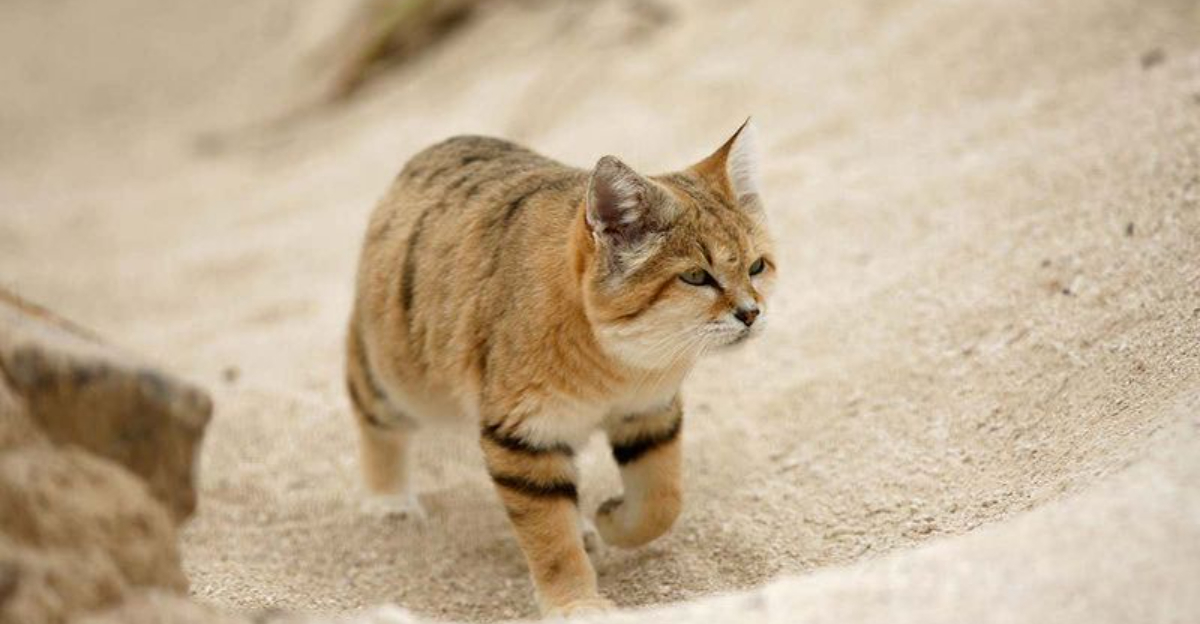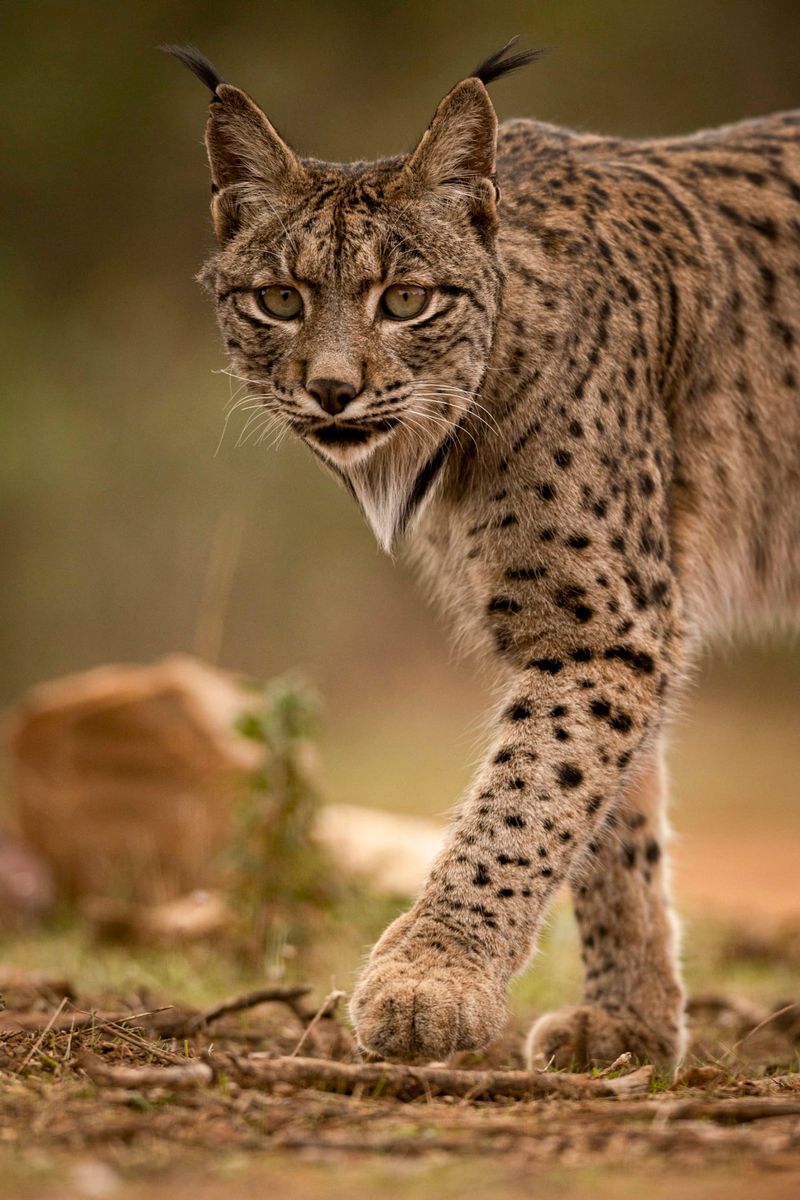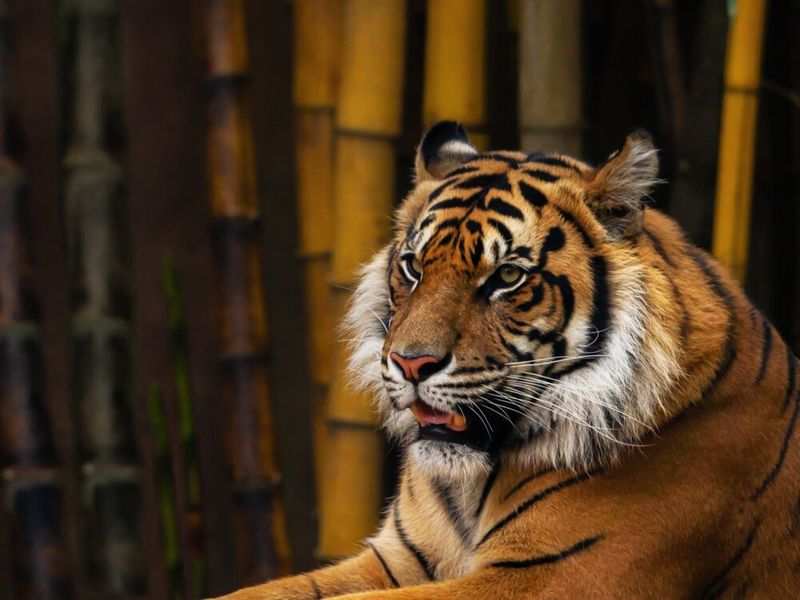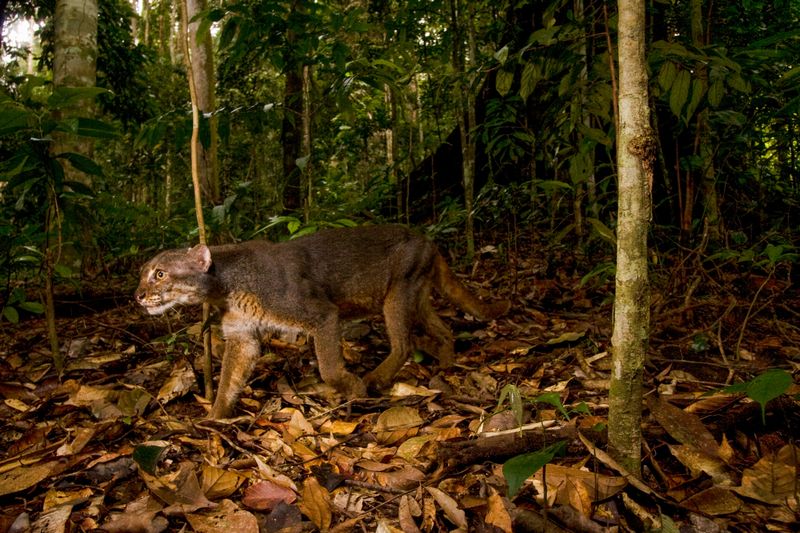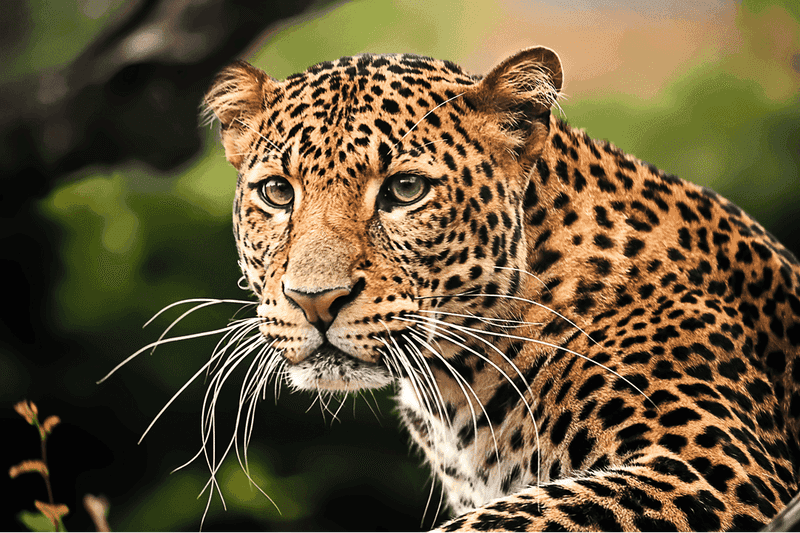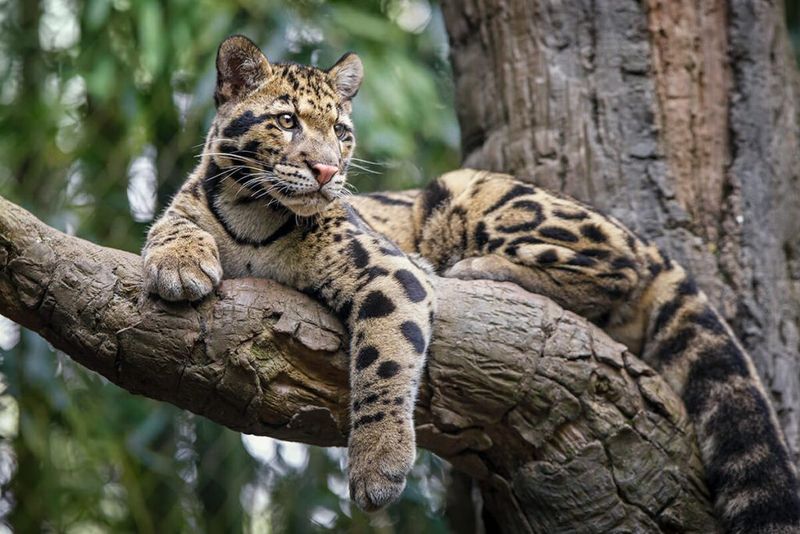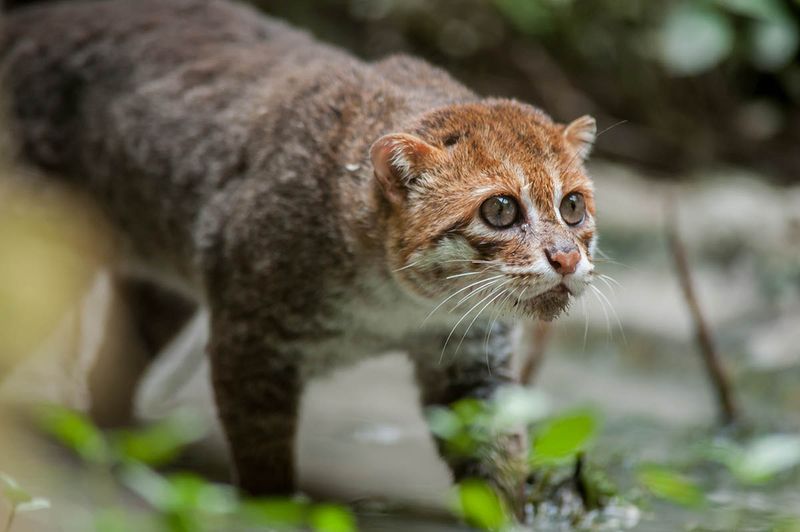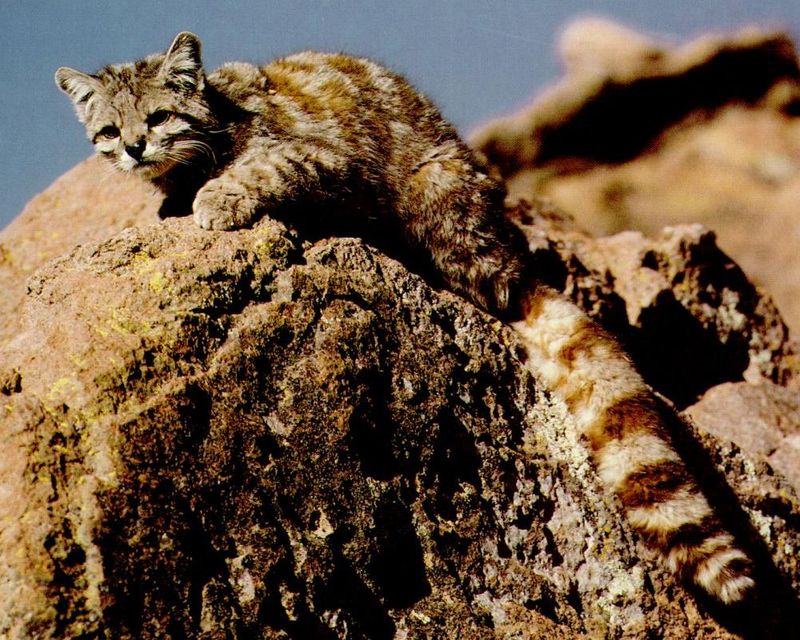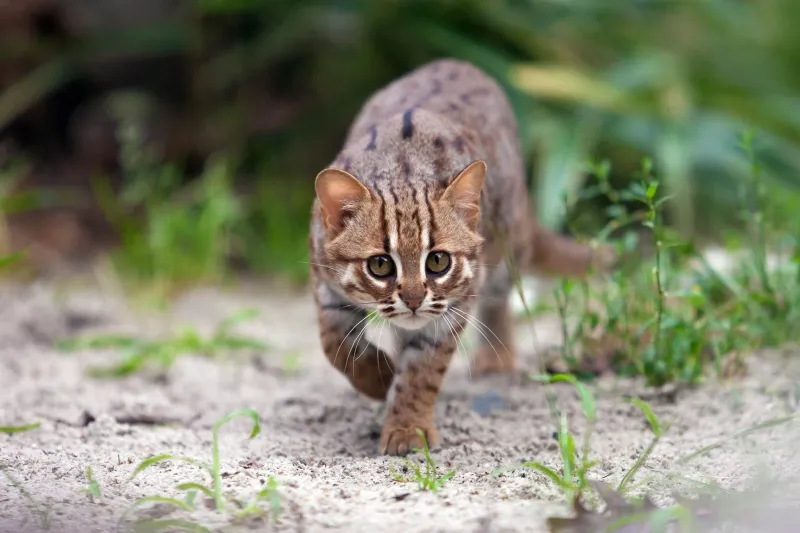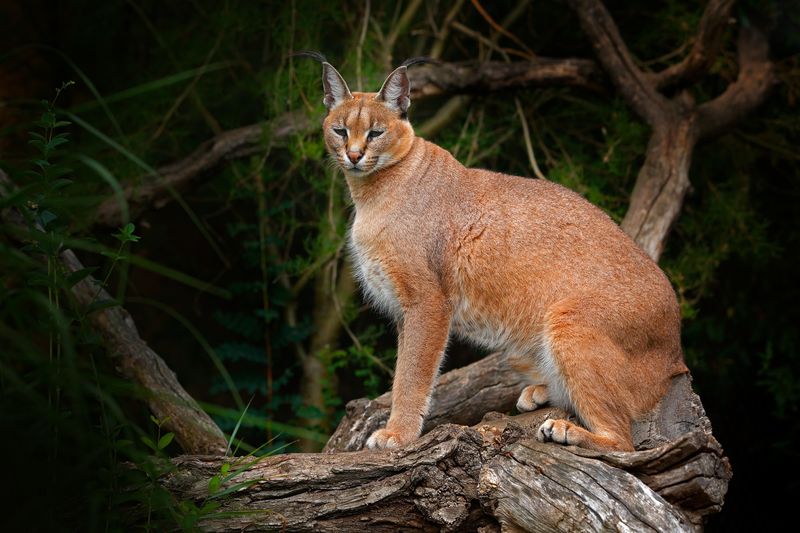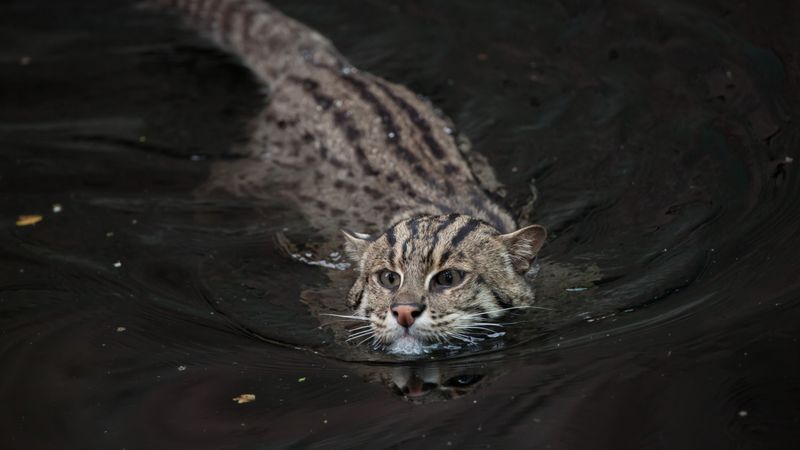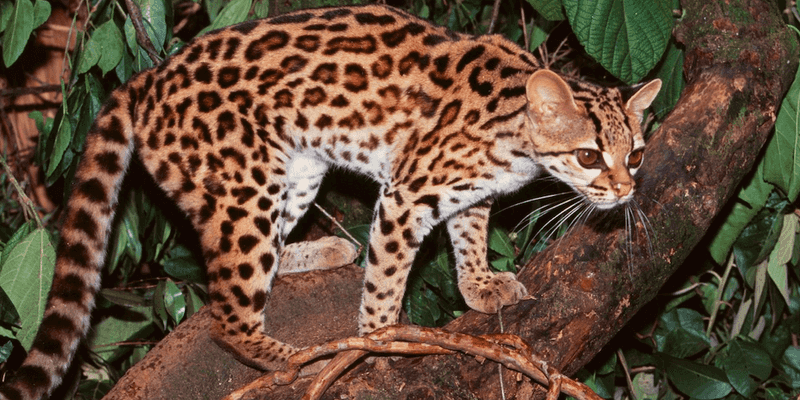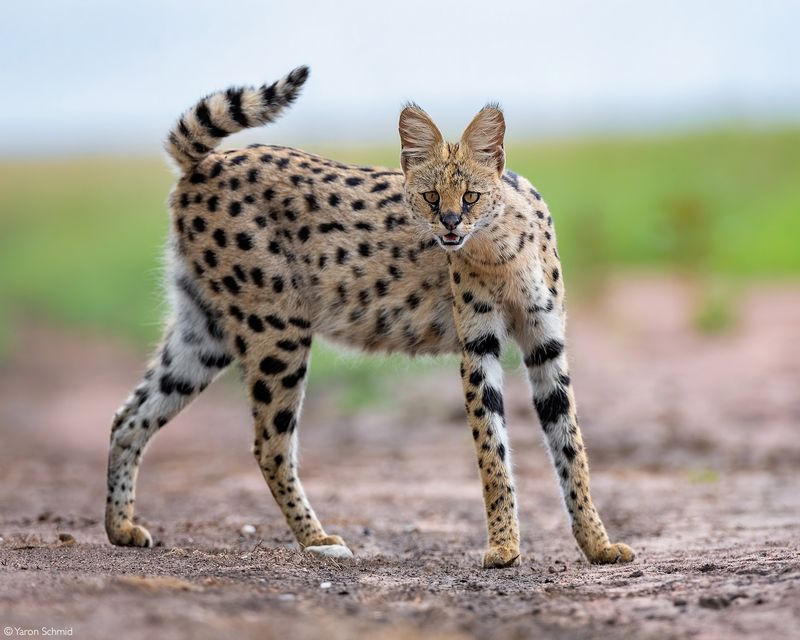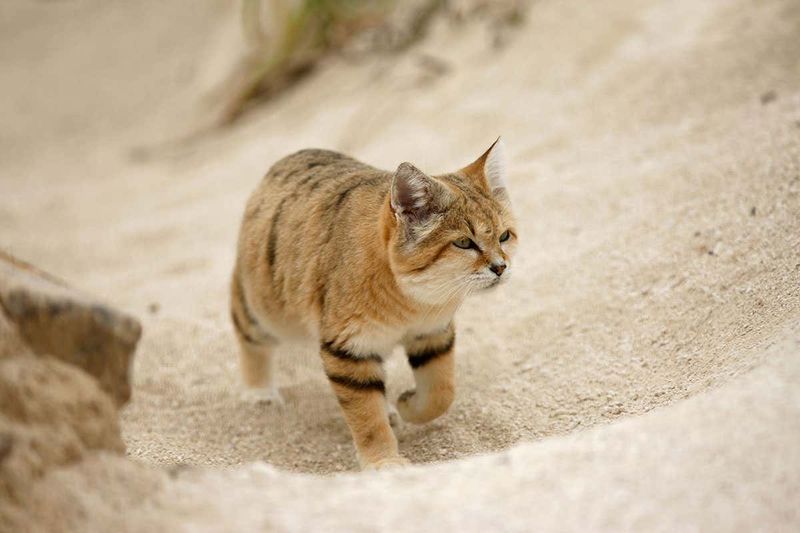📖 Table of Content:
- 1. Amur Leopard
- 2. Iberian Lynx
- 3. South China Tiger
- 4. Borneo Bay Cat
- 5. Javan Leopard
- 6. Snow Leopard
- 7. Sunda Clouded Leopard
- 8. Flat-headed Cat
- 9. Andean Mountain Cat
- 10. Rusty-spotted Cat
- 11. African Golden Cat
- 12. Fishing Cat
- 13. Margay
- 14. Pallas’s Cat
- 15. Serval
- 16. Black-footed Cat
- 17. Caracal
- 18. Kodkod
- 19. Sand Cat
Explore the elusive world of the rarest big cats, whose majestic presence is threatened by extinction. This collection highlights 19 unique species, each with its own story of survival. From the dense jungles to the arid deserts, these big cats face numerous challenges, making sightings incredibly rare. Learn about their distinct characteristics, habitats, and the conservation efforts in place to save them. Join us in discovering the beauty and vulnerability of these magnificent creatures, whose future hangs in the balance.
1. Amur Leopard
The Amur Leopard prowls the frigid forests of Russia and China, its mesmerizing spotted coat blending seamlessly with the snowy terrain. With fewer than 100 individuals remaining, this feline epitomizes the brink of extinction. Its distinctive fur, thick and luxurious, is a natural masterpiece. Yet, the leopard’s survival is continually threatened by habitat loss and poaching.
Conservationists strive to protect these leopards, implementing anti-poaching initiatives and habitat restoration. Did you know? The Amur Leopard’s adaptation to cold climates makes it one of the most resilient big cats. A symbol of hope, its future depends on human efforts.
2. Iberian Lynx
In the heart of the Iberian Peninsula, the Iberian Lynx roams with grace. Known for its tufted ears and striking facial ruff, this lynx is a proud survivor of its Mediterranean home. With a population slowly rising due to dedicated conservation efforts, it’s a beacon of hope in the world of endangered species.
Once on the brink of extinction, this lynx’s journey is a testament to resilience. Its preferred prey, rabbits, are also crucial to its survival. The Iberian Lynx represents a harmonious balance with its ecosystem, embodying the wilderness of Spain and Portugal.
3. South China Tiger
The South China Tiger, with its iconic orange and black stripes, once ruled the dense bamboo forests of China. Revered in Chinese culture, this tiger is now critically endangered, with estimates of only a few dozen left, primarily in captivity.
Conservationists work tirelessly to rewild these tigers, hoping to restore them to their natural habitats. This tiger’s extinction would not only mean the loss of a species but a cultural icon. Interestingly, it is believed to be the ancestor of all tiger species, making its preservation all the more vital.
4. Borneo Bay Cat
Enigmatic and rarely seen, the Borneo Bay Cat haunts the dense rainforests of Borneo. Its reddish-brown coat serves as perfect camouflage, aiding in its secretive lifestyle. Fewer than 2,500 of these cats are believed to exist in the wild.
The bay cat is shrouded in mystery, with much of its behavior and ecology still unknown. Efforts to understand and protect this elusive feline are ongoing. This cat’s existence is a reminder of the hidden wonders in Earth’s unexplored corners, highlighting the importance of preserving their habitats.
5. Javan Leopard
Graceful and elusive, the Javan Leopard prowls the tropical forests of Java, Indonesia. Its rosette-patterned coat offers a stunning contrast against the vibrant greenery. With a population dwindling due to habitat destruction and human conflict, this leopard’s future hangs in the balance.
Conservationists are racing against time to secure protected areas and reduce human-wildlife conflict. This leopard’s survival is crucial for maintaining Java’s biodiversity. Did you know? It’s one of the few leopards that can adapt to both forest and savanna environments, showcasing its incredible versatility.
6. Snow Leopard
The Snow Leopard, often called the “ghost of the mountains,” is a master of stealth in the high altitudes of Central Asia. Its thick, camouflaged coat allows it to navigate harsh terrains with ease. With fewer than 7,000 remaining, this majestic cat faces threats from poaching and habitat fragmentation.
Snow Leopards are crucial for the ecological balance, preying on mountain herbivores. Conservation efforts focus on community engagement and anti-poaching measures. Fun fact: Their long, bushy tails help in maintaining balance and are used as warm blankets during cold nights.
7. Sunda Clouded Leopard
In the dense rainforests of Borneo and Sumatra, the Sunda Clouded Leopard reigns supreme. Its striking cloud-like spots create an ethereal appearance, blending with the forest shadows. This arboreal feline is rarely seen, adding to its mystique.
With a declining population due to habitat loss, conservationists work to protect these forests and their inhabitants. The Sunda Clouded Leopard is a testament to nature’s artistry, its existence a crucial part of the forest ecosystem. Did you know? It has the longest canine teeth relative to skull size among felids, an adaptation for hunting in dense forests.
8. Flat-headed Cat
The Flat-headed Cat, with its distinctively flattened head, is a unique feline found in Southeast Asia’s peat swamps. Its specialized diet consists primarily of fish, making it an expert swimmer and diver.
This cat’s wetland habitat is rapidly shrinking, placing it at risk of extinction. Conservation efforts are focused on preserving these critical areas. The flat-headed cat’s adaptation to an aquatic lifestyle highlights the incredible diversity of feline evolution.
9. Andean Mountain Cat
The Andean Mountain Cat, a small yet resilient feline, inhabits the remote Andes Mountains. Its thick, grayish fur and bushy tail provide warmth against the cold, harsh climate.
With an estimated population of fewer than 1,400, this cat is one of the rarest in the Americas. Conservationists aim to protect its fragile habitat from mining and livestock encroachment. This cat’s survival is crucial for the Andean ecosystem, where it preys on small mammals and birds. Its elusive nature makes every sighting a rare and treasured event.
10. Rusty-spotted Cat
The Rusty-spotted Cat, often dubbed the “hummingbird of the cat family,” is one of the smallest wild cats in the world. Found in India and Sri Lanka, its coat is a work of art, with rusty spots adorning a soft gray background.
Despite its diminutive size, it is a formidable hunter, preying on insects, birds, and small mammals. This cat’s habitat is increasingly threatened by agricultural expansion. Preserving its environment is essential for its survival. Did you know? This cat is known for its agility and quick reflexes, traits that have earned it a legendary status among small felines.
11. African Golden Cat
Secretive and seldom seen, the African Golden Cat inhabits the dense rainforests of Central Africa. Its rich golden-brown coat and solitary habits make it a mysterious presence in its habitat.
With deforestation posing a major threat, conservationists stress the importance of preserving these forests. This cat plays a vital role in controlling rodent populations, maintaining ecological balance. Interestingly, it’s the only wild cat species endemic to Africa’s rainforests, showcasing the continent’s unique biodiversity.
12. Fishing Cat
The Fishing Cat is an adept swimmer, thriving in the wetland regions of South Asia. Its partially webbed feet make it a skilled catcher of fish, its primary diet.
Rapid urbanization and drainage of wetlands threaten its existence, prompting conservation efforts to secure its habitat. This cat’s adaptability to an aquatic environment emphasizes the diverse habitats that big cats occupy. Did you know? Fishing Cats can swim long distances and are often seen diving to catch prey, highlighting their unique adaptation within the feline family.
13. Margay
Known as the “tree tiger,” is a masterful climber residing in the rainforests of Central and South America. Its powerful limbs and flexible ankles allow it to navigate the treetops with ease.
This arboreal lifestyle offers a unique survival strategy, escaping ground predators. However, deforestation poses a severe threat, leading to shrinking habitats. Conservationists work to protect these vital forest corridors. The margay’s elusive nature and striking spotted coat make it a symbol of the forest’s untamed beauty.
14. Pallas’s Cat
Pallas’s Cat, with its round face and dense, fluffy fur, is a unique feline found in the grasslands of Central Asia. Its thick coat provides insulation against the harsh, cold climate.
These cats are solitary and elusive, often hiding among rocks and crevices. Threats from hunting and habitat loss have put their population at risk. Conservation efforts focus on protecting these grasslands and reducing hunting pressures. A fun fact: Pallas’s Cats have the longest and densest fur among wild cats, an extraordinary adaptation for cold environments.
15. Serval
With its long legs and large ears, is a striking feline of the African savannas. Its keen hearing and agility make it an expert hunter, capable of leaping to catch birds mid-air.
Despite being relatively abundant, servals face threats from habitat loss and human encroachment. Conservationists emphasize the importance of preserving these savannas. Did you know? The serval’s ability to jump up to 10 feet vertically is a testament to its extraordinary hunting skills, making it one of Africa’s most efficient predators.
16. Black-footed Cat
The smallest wild cat in Africa, prowls the arid landscapes of southern Africa. Despite its size, it is a formidable hunter, known for its high success rate.
With its population declining due to habitat loss, conservationists are focused on protecting these dry regions. The black-footed cat’s unique hunting prowess, capturing prey several times its size, is a marvel of nature’s adaptation. This cat’s survival is a testament to resilience in harsh environments.
17. Caracal
The Caracal, with its striking long tufted ears, is a master of the arid savannas and deserts. Its sleek build and powerful hind legs allow it to leap great distances, capturing prey with precision.
This cat’s adaptability to arid environments highlights its evolutionary success. However, human-wildlife conflict poses a threat to its survival. Did you know? The caracal is sometimes referred to as the “desert lynx,” a nod to its ability to thrive in dry climates. Conservation efforts focus on reducing conflicts and protecting its habitat.
18. Kodkod
The smallest wild cat in the Americas, roams the temperate rainforests of Chile and Argentina. Its spotted coat and small size make it a rare and elusive presence.
Deforestation is a significant threat, leading to fragmented habitats. Conservation efforts are vital for the Kodkod’s survival, focusing on preserving these unique ecosystems. Did you know? Despite its size, the Kodkod is a fierce predator, relying on stealth and agility to hunt its prey. Its survival is crucial for maintaining the ecological balance of its rainforest home.
19. Sand Cat
The Sand Cat, with its sandy coat and distinctive features, is a true desert dweller. Found in the arid deserts of North Africa and Southwest Asia, it is well-adapted to extreme temperatures.
This cat’s ability to survive without water for extended periods is a remarkable adaptation. Habitat destruction and human activities threaten its existence. Conservation efforts focus on protecting these fragile desert habitats. Did you know? The sand cat’s thick fur insulates it from the cold desert nights, showcasing nature’s ingenuity in adaptation.
